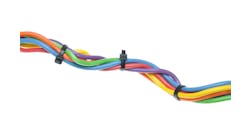Here we looks at applications where feedforward can do more harm than good and what to do to prevent this situation. This problem is more common than one might think. In the literature we mostly hear how beneficial feedforward can be for measured load disturbances. Statements are made that the limitation is the accuracy of the feedforward and that consequently an error of 2% can still result in a 50:1 improvement in control. This optimistic view does not take into account process, load and valve dynamics. The feedforward correction needs to arrive in the process at the same point and the same time as the load disturbance. This is traditionally achieved by passing the feedforward (FF) through a deadtime block and lead-lag block. The FF deadtime is set equal the load path deadtime minus the correction path deadtime. The FF lead time is set equal to the correction path lag time. The FF lag time is set equal to the load path lag time. If the FF arrives too soon, we create inverse response and if the FF arrives too late, we create a second disturbance. Setting up tuning software to identify and compute the FF dynamic can be challenging. Even more problematic are the following feedforward applications that do more harm than good despite dynamic compensation.
(1) Inverse response from the manipulated flow causes excessive reaction in the opposite direction of load. The inverse response from a feedwater change can be so large as to cause a boiler drum high or low level trip, a situation that particularly occurs for undersized drums and missing feedwater heaters due misguided attempts to save on capital costs. The solution here is to use a traditional three element drum level control but added to the traditional feedforward is an unconventional feedforward with the opposite sign that is decayed out over the period of the inverse response. In other words, for a step increase in steam flow, there would be initially a step decrease in boiler feedwater feedforward added to the three element drum level controller output that is trying to increase feedwater flow. This prevents shrink and a low level trip from bubbles collapsing in the downcomers from an increase in cold feedwater. For a step decrease in steam flow, there would be a step increase in boiler feedwater feedforward added to the three element drum level controller output that is trying to decrease feedwater flow. This prevents swell and a high level trip from bubbles forming in the downcomers from a decrease in cold feedwater. A severe problem of inverse response can occur in furnace pressure control when the scale is a few inches of water column and the incoming air manipulated is not sufficiently heated. The inverse response from the ideal gas law can cause a pressure trip. An increase in cold air flow causes a decrease in gas temperature and consequently a relatively large decrease in gas pressure at the furnace pressure sensor. A decrease in cold air flow causes an increase in gas temperature and consequently a relatively large increase in gas pressure at the furnace pressure sensor.
(2) Deadtime in correction path is greater than the deadtime in the load path. The result is a feedforward that arrives too late creating a second disturbance and worse control than if there was no feedforward. This occurs whenever the correction path is longer than the load path. An example is a distillation column control when the feed load upset stream is closer to the temperature control tray than the corrective change in reflux flow. The solution is to generate the feedforward signal for ratio control based on a setpoint change that is then delayed before being used by the feed flow controller. The delay is equal to the correction path deadtime minus the load path deadtime. The same problem can occur for a reagent injection delay that often occurs due to conventional sized dip tubes and small reagent flows. The same solution applies in terms of using an influent flow controller setpoint for feedforward ratio control of reagent and delaying the setpoint used by the influent flow controller.
(3) Feedforward correction makes response from an unmeasured disturbance worse. This occurs in unit operations such as distillation columns and neutralizers where the unmeasured disturbance from a feed composition change is made worse by a feedforward correction based on feed flow. Often feed composition is not measured and is large due to parallel unit operations and a combination of flows that become the feed flow. For pH, the nonlinearity of titration curve increases the sensitivity to feed composition. Even if the influent pH is measured, the pH electrode error or uncertainty of the titration curve makes feedforward correction for feed pH to do more harm than good for setpoints on the steep part of the curve. If the feed composition change requires a decrease in manipulated flow and there is a coincidental increase in feed flow that corresponds to an increase in manipulated flow or vice versa, the feedforward does more harm than good. The solution is to compute the required rate of change of manipulated flow from the unmeasured disturbance and add this to the computed rate of change for the feedforward correction needed paying attention to the signs of the rate of change. If the required rate of change of manipulated flow for the unmeasured disturbance is in the opposite direction, the feedforward correction rate of change in manipulated flow is decreased. If it exceeds the computed feedforward correction rate of change in the manipulated flow, the feedforward rate of change is clamped at zero to prevent making control terribly worse. If the required rates of change for the manipulated flow are in the same direction, the magnitude of the feedforward rate of change is correspondingly increased.
I am trying to see how all this applies in my responses to known and unknown upsets to my spouse.




